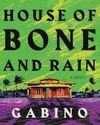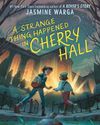
If the human body were composed only of organs, bones, and muscles, we'd merely be a bloody pile. We need connective tissue, so we don't fall apart.
Same with any structure, if you think about it. Put up a brick wall without mortar and see how that works out. Lumber won't stick to itself. Nails, rivets, bolts the right connectors at the places make the whole thing sound.
Fiction is a structured art form; therefore, it too needs bonding elements. For the sake of simplicity, let's call it connective tissue: the small, subtle things, the adroit stuff top authors do to make their stories feel seamless. Where are the characters? What are they thinking? What are they doing?
Here is a passage that could use some help:
They argued with no resolution. At work, Omar heard a sudden sound.
Here's a simple transition, embedded directly in the third-person narrative:
After the argument with Frances, Omar went home and ordered a pizza, though he didn't enjoy it much. The next day at work, he was running the macros on the new database when a sharp crack interrupted his concentration. A gunshot?
With this adjustment, we follow Omar from one piece of action to another, from one place to another in time and space, even from one mood to the next.
When a work of fiction feels choppy, it's often because the author has skipped from one place or character to another without enough help for the reader. And when a story feels labored or sludgy, it's because the author has put in too much connective tissue: It's overtold. This is one of those elements of fiction that are subtle and unquantifiable, and best understood by examples.
Let's start with the simplest sorts of connective tissue and move through to more intricate ones. (Spoilers from real novels and stories ahead.)
1. Dateline
This story is from the July - August 2023 edition of Writer’s Digest.
Start your 7-day Magzter GOLD free trial to access thousands of curated premium stories, and 9,000+ magazines and newspapers.
Already a subscriber ? Sign In
This story is from the July - August 2023 edition of Writer’s Digest.
Start your 7-day Magzter GOLD free trial to access thousands of curated premium stories, and 9,000+ magazines and newspapers.
Already a subscriber? Sign In

Writing for a Warming World - Imagining the overwhelming, the ubiquitous, the world-shattering.
Climate change is one of those topics that can throw novelists—and everyone else—into a fearful and cowering silence. When the earth is losing its familiar shapes and consolations, changing drastically and in unpredictable ways beneath our feet, how can we summon our creative resources to engage in the imaginative world-building required to write a novel that takes on these threats in compelling ways? And how to avoid writing fiction that addresses irreversible climate change without letting our prose get too preachy, overly prescriptive, saturated with despair?

Kids' Author Meg Medina Inspires Readers
WD chats with the National Ambassador of Young People’s Literature.

The Horrors of Grief
Whether hot off the presses or on the shelves for years, a good book is worth talking about.

The Mystery of Growing Up
New York Times-bestselling author Jasmine Warga tackles a new genre with her signature blend of empathy for her readers, agency for her characters, and the belief that art is the great connector.

Education
Even if it's not your thing, you're probably familiar with the term dark academia.

A Do-Over Romance
Karin Patton, the first-place winner of the 24th Annual Writer's Digest Short Short Story Awards, shares a funny story about secondchance love and a brief Q&A.

Everyday Wonder
How to mine awe from the mundane

From Ordinary to Extraordinary
Unveil the hidden beauty in the facts and transform your nonfiction with the power of wonder.

Childhood: Our Touchstone for Wonder
How to get in touch with Little You and create big new work for today.

Agent Roundup
22 agents share details, about what kind of writing will pique their interest and offer tips for querying writers...